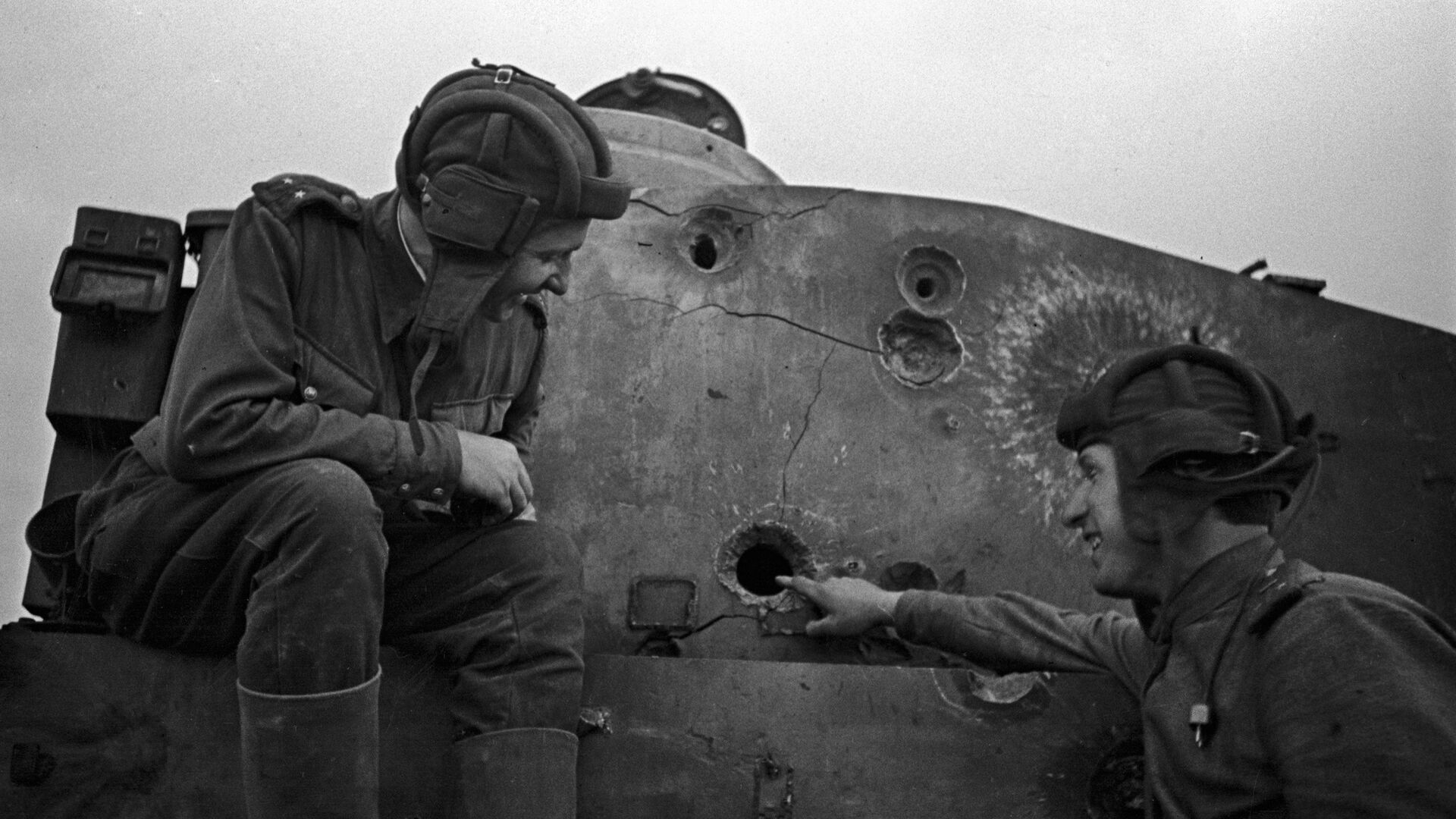https://sputniknews.in/20230712/largest-tank-battle-in-history-80-years-since-battle-of-prokhorovka-2962646.html
Largest Tank Battle in History: 80 Years Since Battle of Prokhorovka
Largest Tank Battle in History: 80 Years Since Battle of Prokhorovka
Sputnik India
80 years ago today, during the Great Patriotic War, one of the largest battles in military history occurred near the Prokhorovka railway station.
2023-07-12T15:29+0530
2023-07-12T15:29+0530
2023-07-12T15:29+0530
battle of kursk
world war ii
nazi germany
soviet union (ussr)
red army
great patriotic war
russia
victory day in russia
history
https://cdn1.img.sputniknews.in/img/07e7/07/0c/2963090_0:130:3001:1818_1920x0_80_0_0_ecbe872c12664a01f9586bbf50b02a2b.jpg
In the Battle of Prokhorovka, the German command sought to encircle and destroy Soviet forces that had breached their defensive line in the Kursk, Orel, and Belgorod regions. Conversely, the Soviet command aimed to encircle the enemy grouping.Over 1,000 tanks and self-propelled artillery units were involved in combat from both sides.Most Brutal Tank Battle in HistoryOn the morning of July 12, the Red Army began an artillery barrage to try to soften up enemy forces. The First SS Panzer Division rushed to defensive positions. Soviet tank men, equipped mostly with older T-34 tanks with 76mm guns, proved outmatched against the new Tigers. This disparity became especially painful as tanks rushed into close-quarters combat, with the Tigers' 88 mm shells easily penetrating the T-34s' armor. All that was left for the Soviets was to rely on their tanks' superior speed and maneuverability. Enemy artillery and bombardment by hundreds of enemy aircraft quickly turned the offensive into a meat grinder.Fighting in the area continued until July 16, with each side failing to break through the other's defenses. However, the Germans exhausted their offensive potential, and Army Group South abandoned its plans to break through to Kursk.Significance of Battle of ProkhorovkaThe Prokhorovka events significantly influenced the Soviet forces' victory in the overall Battle of Kursk, which was one of the decisive and largest battles of World War II. After the Battle of Kursk, the balance of power on the Eastern Front shifted dramatically in favor of the Red Army, creating favorable conditions for a general strategic offensive. Germany and its allies shifted to defense on all fronts of World War II, marking the beginning of the collapse of the fascist bloc.
https://sputniknews.in/20230705/why-battle-of-kursk-was-a-turning-point-for-eastern-front-2843304.html
russia
Sputnik India
feedback.hindi@sputniknews.com
+74956456601
MIA „Rossiya Segodnya“
2023
Sputnik India
feedback.hindi@sputniknews.com
+74956456601
MIA „Rossiya Segodnya“
News
en_IN
Sputnik India
feedback.hindi@sputniknews.com
+74956456601
MIA „Rossiya Segodnya“
Sputnik India
feedback.hindi@sputniknews.com
+74956456601
MIA „Rossiya Segodnya“
largest tank battle in history, battle of prokhorovka, 80 years since battle of prokhorovka, who won battle of prokhorovka, what was the biggest tank battle, could the germans have won kursk,
largest tank battle in history, battle of prokhorovka, 80 years since battle of prokhorovka, who won battle of prokhorovka, what was the biggest tank battle, could the germans have won kursk,
Largest Tank Battle in History: 80 Years Since Battle of Prokhorovka
80 years ago today, during the Great Patriotic War, one of the largest battles in military history occurred near the Prokhorovka railway station.
In the Battle of Prokhorovka, the German command sought to encircle and destroy Soviet forces that had breached their defensive line in the Kursk, Orel, and Belgorod regions.
Conversely, the Soviet command aimed to encircle the enemy grouping.
Over 1,000 tanks and self-propelled artillery units were involved in combat from both sides.
Most Brutal Tank Battle in History
On the morning of July 12, the Red Army began an artillery barrage to try to soften up enemy forces. The First SS Panzer Division rushed to defensive positions. Soviet tank men, equipped mostly with older T-34 tanks with 76mm guns, proved outmatched against the new Tigers. This disparity became especially painful as tanks rushed into close-quarters combat, with the Tigers' 88 mm shells easily penetrating the T-34s' armor. All that was left for the Soviets was to rely on their tanks' superior speed and maneuverability. Enemy artillery and bombardment by hundreds of enemy aircraft quickly turned the offensive into a meat grinder.
Fighting in the area continued until July 16, with each side failing to break through the other's defenses. However, the Germans exhausted their offensive potential, and Army Group South abandoned its plans to break through to Kursk.
Significance of Battle of Prokhorovka
The Prokhorovka events significantly influenced the Soviet forces' victory in the overall
Battle of Kursk, which was one of the decisive and
largest battles of World War II.
After the Battle of Kursk, the balance of power on the
Eastern Front shifted dramatically in favor of the Red Army, creating favorable conditions for a general strategic offensive. Germany and its allies shifted to defense on all fronts of World War II, marking the beginning of the collapse of the fascist bloc.


